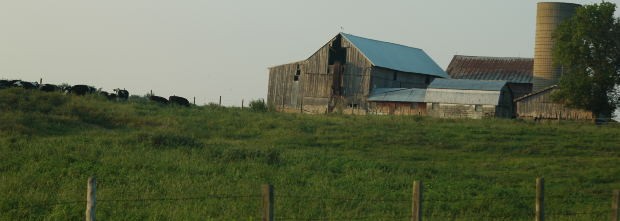
Posted by: Suzanne Lois, Agricultural Risk Advisor
When asked to write an article about forage policies, the first thought that came to my mind was where do I start? All three forage policies are not offered in every state or in every county in that state where they are offered, and one of the policies offered has different coverage depending on which side of the continental divide you live on. You’re kidding, right? It sounds complicated, but when you work with a crop insurance agent, they’ll help you understand what coverage the forage policies offer and the reporting requirements. Then they’ll help you decide if a forage policy should be a part of your risk management plan.
Forage Policies: There are three types of forage policies: Forage Seeding, Production (APH), and Group Risk (GRP). These policies cover three of the following types of forage: Alfalfa, Alfalfa/Grass mix, and Red Clover. They are available in limited states and in some cases limited counties within those states.
The Forage Seeding Policy is designed to cover the initial investment you have in planting a forage crop. Specifically, this per-acre dollar insurance plan covers the risks associated with establishing the forage stand in its first year during the insurance period. (Acres planted for the intent of grazing, or grazed during the insurance period are uninsurable acres). Replant coverage is provided with this policy, but only one replant provision is included. Replacing new seed in an existing damaged stand is not considered replanting and, therefore, not covered. Prevented plant coverage is not offered under this policy.
The insurance period is a calendar year and has other factors that can affect the insurance period such as late harvest date, initial harvest date and the state in which is it is written. Before the end of the insurance period, an adjuster from your insurance company will complete an in-field inspection. This will include a plant stand count to determine if a loss needs to be reported by your agent. The only paperwork required is an acreage report, which must be submitted by the acreage reporting deadline. Only 19 states offered forage seeding policies in 2012, and not all 19 states offer both spring and fall seeded forage policies.
The Group Risk Plan (GRP) covers the production loss for a forage crop in a county, but a claim is only paid if the entire county suffers a loss. Therefore, you may suffer a loss, but if the entire county, as determined by FCIC (Federal Crop Insurance Corporation) using the National Agricultural Statistics Service (NASS) data, does not fall below the county’s expected yield, no payment will be made to you. When purchasing a GRP policy, you will need to determine what percentage of the county yield you wish to cover. Most states that offer GRP offer a minimum CAT coverage and up to 90 percent of the expected county yield. The price per ton of forage is determined by FCIC and varies by state and county.
Claims are settled the following spring after the NASS data has been issued and FCIC has determined if your county has had a loss. There are no claims to submit, claims are automatically paid by the insurance company once FCIC has determined a loss existed in the county in which you had a GRP policy. The only paperwork for this policy is an acreage report, which is due by the acreage reporting deadline, while production reporting is not required for this policy. GRP policies were only offered in four states in 2012 – IL, MN, WI and PA – with limited county availability.
The Actual Production History (APH) Policy protects against actual production lost during the insurance period. The insurable acres are those acres that have established a stand for one calendar year, an adequate stand at the beginning of the insurance period, and the stand doesn’t exceed the age limitation, most policies are not insurable past the fifth year. When purchasing an APH policy, you must determine what percentage level of your actual production history and the established price you want to cover - you can select between 50 to 75 percent of these values. You must also determine if you want basic unit coverage (all acres reported as one unit) or optional unit coverage.
The reporting requirements for an APH policy, which are greater and require attention to detail, include an acreage, production and underwriting report. Incomplete production history records can lead to unpaid claims, or audits, so it is imperative that you work with your crop insurance agent to make sure you have the proper record keeping procedures for APH policies. If you believe you will have a claim on your APH policy, contact your agent to submit a claim. The claims adjuster will then contact you to determine if there is a claim based on your coverage level and production records. Only 23 states offer APH policies with limited county availability in 2012.
Work with a Crop Insurance Agent. Forage policies can be a great risk management tool if you understand what they cover and the detailed reporting requirements. It is important to work with an agent who understands these policies so you can make the best risk-management strategy for your operation. For costs and complete details of these forage policies, contact your crop insurance agent or visit http://www.rma.usda.gov/.
Topics:





